What is Keratosis Pilaris?
Keratosis Pilaris (KP) is an extremely common skin condition characterized by small bumps and dry rough patches on the body, most often on the back of the upper arms, the front of thighs, and the buttocks. KP is often described as a condition of childhood. Studies indicate that KP affects between 50 and 80% of all adolescents. But for many people – up to 40% of all adults, with higher incidence rates for women as compared to men – this condition persists well into adulthood and beyond.
KP is caused by the buildup of keratin, a hair protein, in the pores. This buildup can clog the pores, blocking the emergence of growing hair follicles and creating small bumps where otherwise a small hair should appear. These bumps are generally harmless, although severe KP can cause itching, discomfort, inflammation, and scarring. Most people with KP are focused on addressing the cosmetic implications of their keratin-blocked pores, which can appear rough, dry, flaky, bumpy, patchy, and red. KP bumps are also frequently mischaracterized as body acne, which is a separate but often visually similar skin condition.
Despite how widespread KP is among adolescents and adults, there is no definitive understanding of the root causes of the condition. Observational studies have focused on the close relationship between KP and various dry skin conditions, along with seasonal and climate variation in KP symptoms, which tend to intensify in colder, dryer months.
There is an emerging consensus that KP may also be associated with the Atopic Triad, which describes the linkage between eczema, asthma, and allergies. People with one of these conditions most likely suffer from at least one of the other conditions, and often all three. Research on the Atopic Triad suggests that a hereditary genetic predisposition can combine with environmental, dietary, and other health conditions (such as stress) to trigger chronic flare-ups of eczema, asthma, and allergies. A study published by the National Institute of Health points to a potential genetic commonality among people who suffer from at least one of the Atopic Triad disorders: a mutation in the gene which supports the production of a protein called filaggrin. Without sufficient filaggrin, the skin can lose moisture and become dry, itchy, and rashy. These symptoms are all associated with eczema. A lack of filaggrin can also impair the proper functioning of the skin barrier and increase susceptibility to allergens like pollution, dust mites, pet dander, and pollen – all common triggers for asthma and hay fever flareups. Keratosis Pilaris may in fact be a fourth member, or at least a not-so-distant relative, of this Atopic Triad.
Keratosis Pilaris by any other name…
While Keratosis Pilaris is extremely common, most people know it by many other names, including chicken skin, strawberry skin, strawberry legs, body bumps, red body bumps, ingrown hairs, rough skin, flaky skin, body breakouts, and body acne. If you recognize your skin in any of the images below, you may actually be dealing with KP.
"Chicken Skin"

"Strawberry Skin"
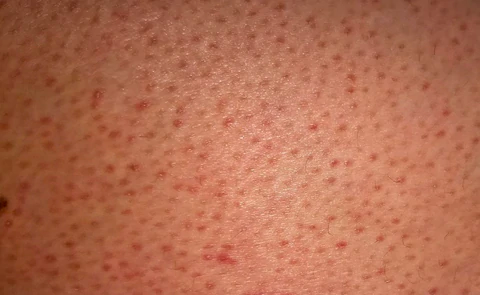
"Strawberry Legs"
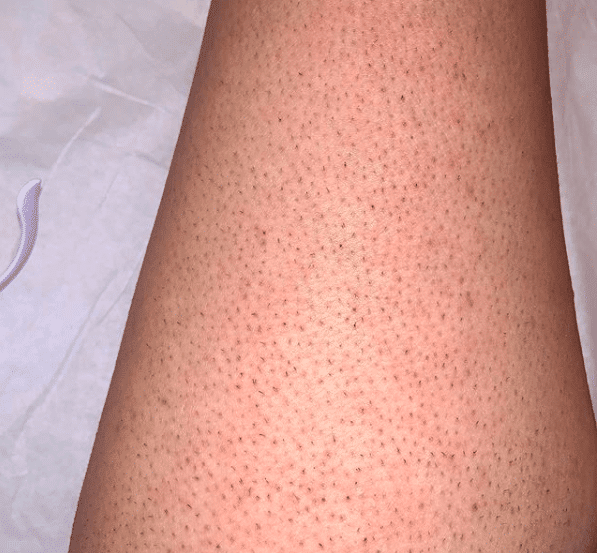
"Body bumps"
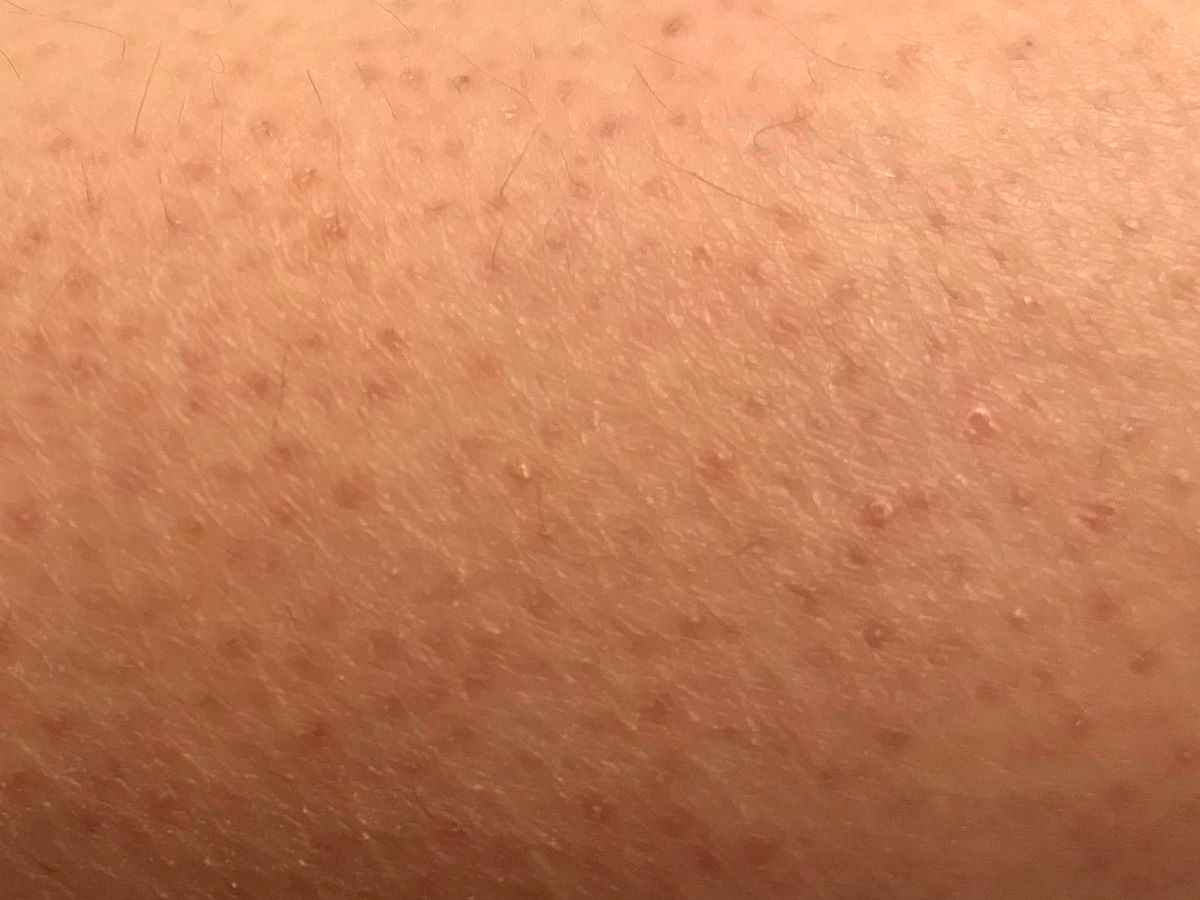
"Dry Rough Skin"

Treatments for KP
There is no known "cure" for KP. But there are highly effective treatment protocols to address the symptoms of KP and dramatically improve the appearance and feel of persistent body bumps.
Soaking
Warm baths and steam sessions can help unclog and loosen pores and prepare the skin for further treatments. It is important to remember that sustained heat can strip the skin of natural oils, so it is important to limit the duration and intensity of heat exposure or to follow up with additional steps to guard against depletion of healthy skin oils. The Korean approach emphasizes relatively intense and sustained exposure to heat and steam, followed by or coupled with other treatments which soothe, nourish, and protect the skin.
Physical exfoliation
Physical exfoliation, in the form of granulated scrubs, washcloths, pumice stones, loofahs, and other interventions, can be helpful to remove dead skin cells and excess keratin blocking your pores. Moderation is key, as excess physical exfoliation can irritate and damage the skin and exacerbate KP symptoms.
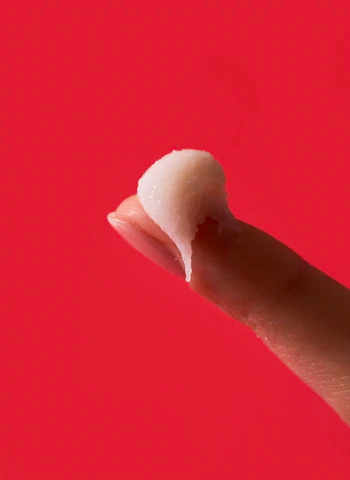
Chemical exfoliation
Chemical exfoliation, in the form of acids and enzymes which react with skin to gently unglue and peel away dead skin cells and excess keratin, is an important step to help slough off dead skin cells and unclog pores to improve the look and feel of body skin. Chemical exfoliation is especially important if KP is red or inflamed, as physical exfoliation can be excessively harsh for severe KP.
Soothing
As KP can also come with redness and inflammation, using ingredients that visibly calm and quell inflammation is helpful. Korean bath scrub rituals often lean on a bevy of soothing herbal soaks and ingredients in addition to exfoliation.
Hydration
A key part of combatting KP is using ingredients that bind moisture to skin to help address the KP in a more substantial and long-lasting way. Part of the reason that the Korean bath scrub ritual is so effective at smoothing skin is because there is ample humidity, hydration and humectants being used.
Fortification
Stronger and more resilient skin is always a plus when it comes to minimizing the appearance of KP and really when it comes to combatting many other skin conditions. Ceramides, pre and probiotics and certain lipids like squalane are terrific ways to help fortify skin.
Meet KP Bump Boss
We crafted our KP Bump Boss Microderm Body Scrub to deliver all of the above benefits in a single formula so that you can treat your Keratosis Pilaris in one step. We included a large concentration of 10% AHA including glycolic acid and lactic acid and PHA to deliver potent chemical exfoliation. This is combined with finely milled micro-crystals to deliver physical exfoliation. The beauty is that you’re the boss. Given the specific texture of the formula, you can control how much you want to lean into the scrubbing. Whether you’re rubbing gently or with more force, the chemical exfoliants are soaking into skin and knocking off dead skin cells. Then, there are time-tested Korean herbal and spa ingredients that visibly calm redness and quell inflammation. We love iconic mugwort, barley and cica combined with tea extracts to deliver super calm results as the skin is being visibly smoothed. Hyaluronic acid is also included to take advantage of all the in-shower humidity and bind moisture to skin. Then refreshing cucumber and lightweight squalene hydrate without being heavy on skin. Last but not least, we include probiotics to help skin become more resilient.
Over three hundred formulas and thirty months later, we’re thrilled to offer a tested and proven solution for KP, an extremely common and persistent skin condition.
We tested KP Bump Boss extensively through third parties and the results speak for themselves.
In a 3rd party study of people with Keratosis Pilaris:
93% saw and felt smoother skin
94% saw ingrown hairs be smoothed
95% saw dry, flaky skin and dead skin cells sloughed off
89% saw even red bumps were calmed
And here are the incredible before and after photos of people who tested the products for up to three months with photos taken intermittently throughout this time period.
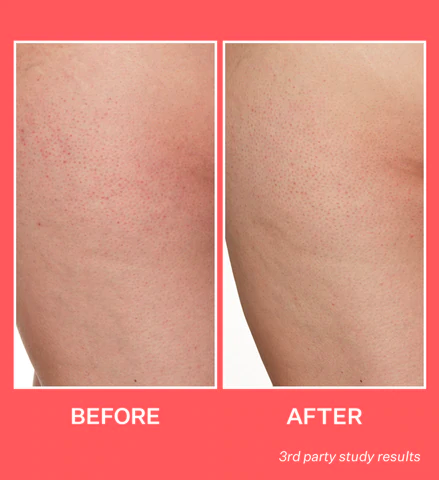
Ready to transform your KP? Add KP Bump Boss Microderm Body Scrub to your shower routine. If you have any questions about keratosis pilaris, let us know below. Our team of estheticians will be here for you.
Cheers to radiance!
Peach & Lily


